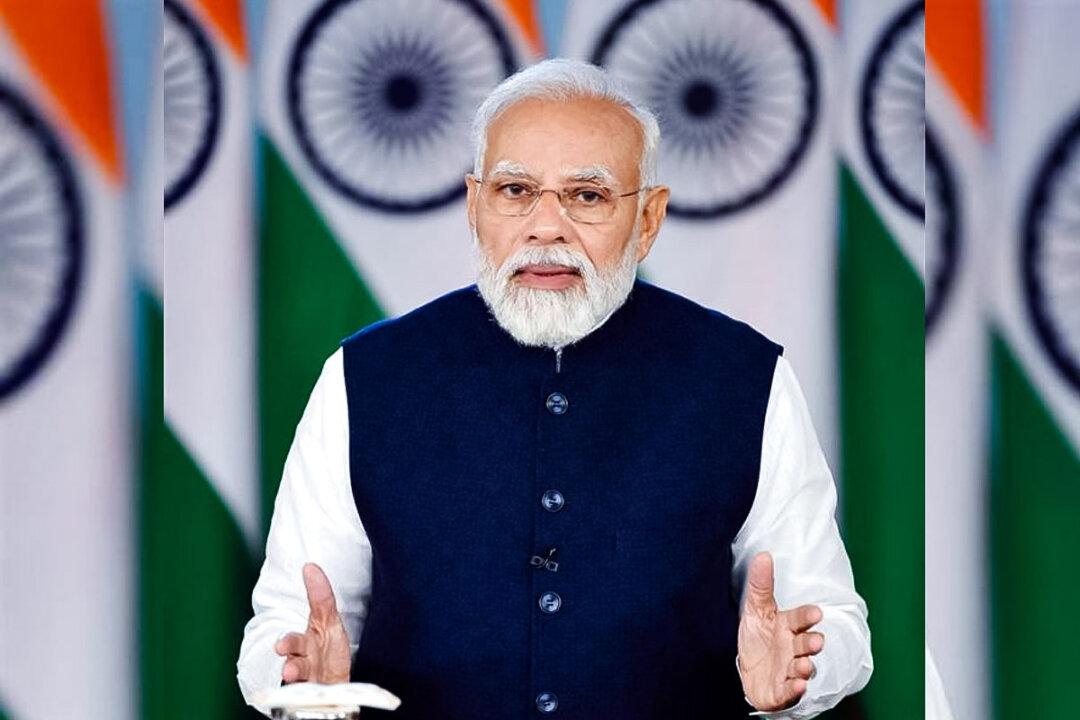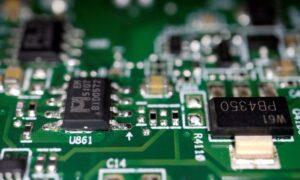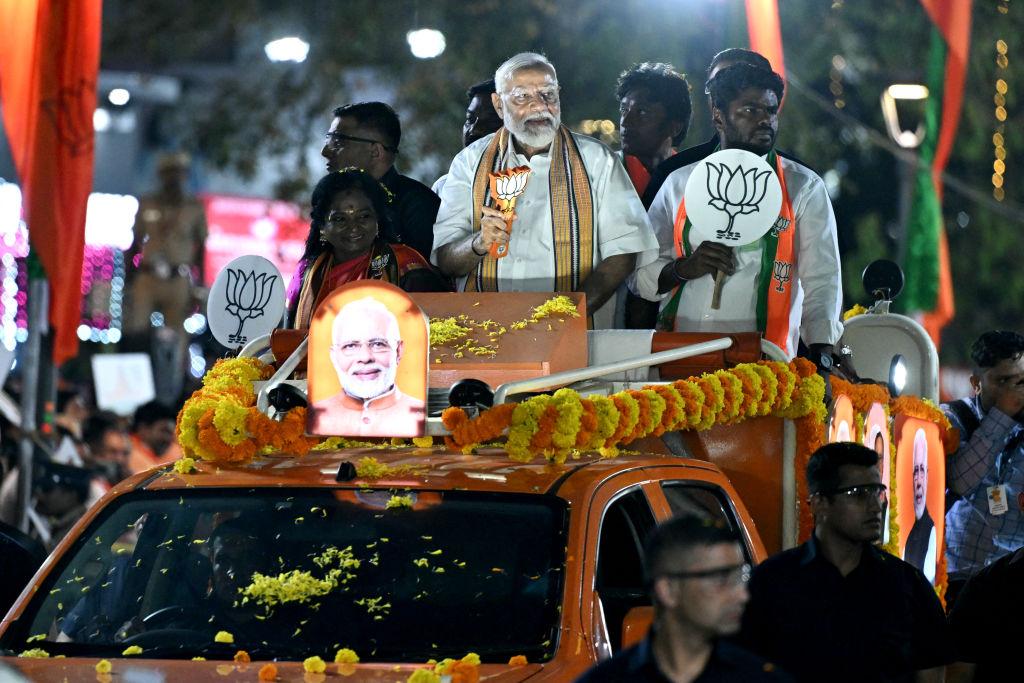NEW DELHI—Indian Prime Minister Narendra Modi laid the foundation for three semiconductor plants worth more than $20 billion on March 13. The prime minister said the projects “will help India to become a global semiconductor hub.”
The three plants include a collaboration with a Taiwanese and a Japanese corporation. They will join India’s first high-end semiconductor fabrication plant, by U.S. chipmaker Micron Technology Inc., which is expected to be ready by year’s end.
In an exclusive interview, Akhil Ramesh, director of the India Program at the Honolulu-based Pacific Forum, described the development as India “stepping into the semiconductor revolution.”
Mr. Ramesh framed the semiconductor push in light of what is being called “Industry 4.0,” “the fourth industrial revolution,” or “4IR”—all terms for the rapid technological advancements of the 21st century.
Just as steam propelled the first industrial revolution, electricity the second, automation and machinery the third, intelligent computers are shaping the fourth industrial revolution. Mr. Ramesh stressed that establishing a semiconductor “eco-system” will be key to India’s success in the fourth industrial revolution and an important factor in its geopolitical power in the mid-century economy.
India aims to control the production of advanced technologies, he said, in hopes of “leading the world and setting the standards of operations.”
Mr. Modi’s government launched the country’s ambitious semiconductor mission with an outlay of $10 billion in 2021. It advanced toward the goal with the Cabinet’s approval last month of the three new plants, which are estimated to generate 20,000 advanced technology jobs and about 60,000 indirect jobs, according to Indian state media DD News.
India’s Tata Group will set up a semiconductor fabrication plant worth $11 billion in collaboration with Taiwan’s Powerchip Semiconductor Manufacturing Corp. The facility will be located in Dholera, Gujarat, in western India.
Another Indian company, CG Power, will set up a chip packaging plant worth $10 billion, in partnership with Japan’s Renesas Electronics Corp. and Thailand’s Stars Microelectronics, in Sanand, Gujarat.
A third plant, a chip packaging operation worth $3.3 billion, will be set up by Tata unit Tata Semiconductor Assembly and Test Pvt. Ltd. in Morigaon, Assam, in eastern India.
The Tata Group is India’s largest conglomerate. The group has pioneered and christened several industries in India, Mr. Ramesh said. He described the group as “leading from the front,” to pave the way for semiconductor manufacturing as well.
The partnership with Taiwanese and Japanese companies is a natural fit, Mr. Ramesh noted.
Diversifying Supply Chains
Given the significance of semiconductor manufacturing and supply chains to the fourth industrial revolution, they are key to emerging geoeconomics and geopolitics, Mr. Ramesh said. Consequently, it’s essential for countries such as India to secure their supply chains from adversarial powers and seal dependable partnerships with like-minded nations, he said.“Semiconductors are ubiquitous in modern society and go into vital goods from fighter jets to supercomputers. It is important for India to not be dependent on any adversarial nation or one that faces severe geopolitical risks,” Mr. Ramesh said.
There are three major nodes in the semiconductor value chain, he explained. At present, Western companies command the lion’s share of the first node: design and hold patents. Taiwan is a leader in the second node, which is manufacturing. China is one of the largest nations controlling the third node: assembly, testing, and packaging.
“India’s recent announcements on semiconductor plants are part of the West’s broader ‘China+1 strategy’ of diversifying key supply chains out of China,” the Honololu-based expert said.
Micron Technology has further planned an investment of $2.5 billion to establish an ATMP (assembly, test, marking, and packaging) facility in Gujarat’s industrial hub Sanand.
However, Mr. Ramesh said he believes that India is still averse to multilateral trade agreements over fears of Chinese dumping and the potential loss of its indigenous industry.
India’s Challenges
While India has taken its first steps toward a semiconductor revolution, Mr. Ramesh predicted that it will face unique challenges, listing four of them.The first challenge, he said, is the lack of “sufficient regulatory oversight and checks and balances,” leading to a waste of tax money and inefficient allocation of resources. He holds the lack responsible for the failure of a $19.5 billion joint venture announced last year between Vedanta, an Indian mining company, and Foxconn, a Taiwanese company. The failed venture had aimed to set up semiconductor and display production plants in Gujarat.
India’s second challenge would be its infrastructure and environment issues, Mr. Ramesh said, underlining the gravity of the issue. Infrastructural challenges can lead to operational disruptions and, in semiconductor manufacturing, this could lead to millions in losses.
He also expressed concerns about environmental degradation. Semiconductor manufacturing is very water-intensive and is known to deplete water resources.
“Hence, there is a looming environmental risk with semiconductor manufacturing initiatives,” he said.
Mr. Ramesh foresees a third challenge: labor and workforce management issues due to India’s increasing dependence on East Asian partners for semiconductor manufacturing.
Indian External Affairs Minister Subrahmanyam Jaishankar visited Seoul and Tokyo from March 4 to March 8 to discuss various bilateral, regional, and global issues in the Indo-Pacific region, including discussions on semiconductors and supply chain security for advanced technologies.
The Risk of Sanctions
The last challenge, which the expert believes has largely been overlooked, is the risk of international sanctions on dual-use advanced and critical technologies. He referred to the recent sanctions imposed by the European Union on Indian microelectronics manufacturer Si2 Microsystems.The sanctioned company partners with India’s Ministry of Electronics and Information Technology and the state-funded Indian Institute of Technology Madras. It designs integrated circuits for commercial, military, and space industries.
While the EU didn’t specify why it had sanctioned Si2, news reports said the Indian company was accused of facilitating semiconductor consignments to Moscow. Semiconductors can be dual use because many modern weapons systems also rely on them.
“India’s strong economic and defense ties with nations such as Russia, which have come under sanctions recently, will make India vulnerable to third-party curbs,” Mr. Ramesh said.
“De-conflicting supply chains will be a challenging task given that India has strong defense ties with Russia and rapidly expanding and strengthening technological and economic ties with the West.”







